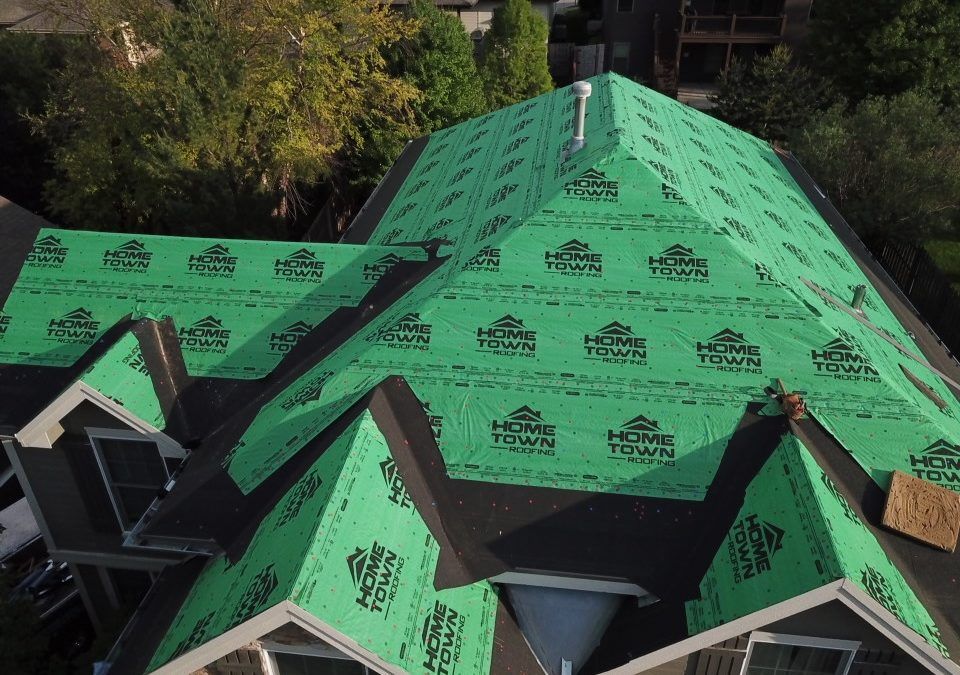
What is synthetic felt?
Synthetic felt is called by many names. It’s called synthetic felt, roofing felt, roofing paper, underlayment, roll roofing, and roofing tar paper to name a few. But what is it made of and how is it applied?
Roofing felt is comprised of a base and a coating. The base is made from natural materials (such as wood cellulose) or more commonly synthetic materials (such as fiberglass or polyester). The base is then coated or saturated with a protective coating such as bitumen (asphalt), which repels water but still allows the product to breathe.
Synthetic felt is typically applied over the whole roof directly to the roof deck. The only places that do not have synthetic felt would be where a roofer installs ice and water barriers and any holes, or penetrations, in the roof.
Why use synthetic felt?
Roofers know that adding a layer of protection between your roof decking and your roof shingles helps create a better-looking and longer-lasting roof. In fact, according to the 2018 International Buiding Code, it is required on all shingled buildings! But just how does it do that? Here’s a quick list that why roofers use felt:
1. Repels Water
Wind-driven rain or snow can get trapped under your shingles. This puts your roof deck at risk of moisture damage, leaks, rot, and mold. Roofing felt helps ensure the water drains off the roof and doesn’t leak into your home. The felt is waterproof, so any water that gets stuck will roll right off of it.
2. Provides Protection In Case Of Damage
In northern climates, ice dams are a common cause of water damage. When the heat from your home melts snow or ice on your roof, the water can then seep into your roof’s nooks and crannies and ultimately into your residence, causing damage to ceilings, walls, or insulation. Your best protection against an ice dam is an ice and water shield that lines the edges of your roof. Roofing felt covers the rest of the roof, offering an extra layer of protection against leaks.
3. Provides Extra Weather Protection
Your shingles are your roof’s first line of defense against the elements, but having a backup layer of weather protection underneath helps extend the life of your roof deck. In the event of a major weather event that breaks your shingles loose, the roofing felt guards your wood deck against rain and water until the shingles can be replaced. In fact, roofers will use felt to weather-proof a roof before they can do a repair!
4. Synthetic Felt May Be Required For Fire Protection Ratings
Shingles are evaluated for their fire ratings by testing a small deck with the roofing felt underlayment in place. Without this underlayment, the shingles alone may not meet the Class A fire requirements.
5. Protects Deck During Installation
Roofing felt prevents the deck from being exposed to the elements before or while the shingles are being applied. This is especially helpful on larger roofs that take several days to roof.
6. Improves Aesthetics of Roof
Your roof deck might not lie perfectly straight or flat. This is normal, but a layer of felt gives an even, uniform surface upon which you can install your shingles. It can help prevent the pattern of your wood decking from showing through your shingles.
7. Prevents Wood Resin Stains
Certain types of wood sometimes have a risk of leaching small amounts of resin over time as it ages. Having a layer of roof felt will block the resin, preventing it from staining or compromising your roof shingles.
Ready to learn more? Just give us a call.

